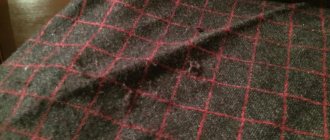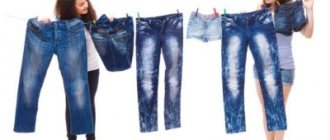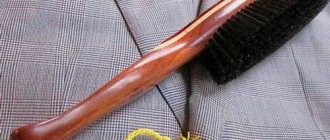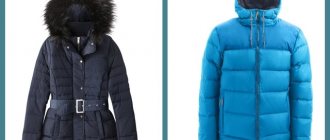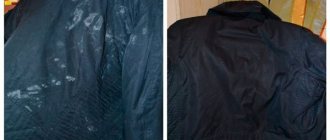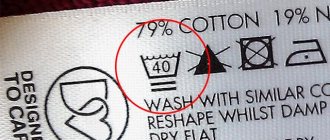To properly dry a down item, it must be washed properly. Therefore, this process is carried out using delicate detergents and special programs in washing machines.
It must be remembered that the jacket cannot be soaked or washed in water above 30 degrees. Otherwise, you won’t be able to dry your clothes properly.
Let's look at how to dry a down jacket after washing at home.
Basic Rules
To preserve things made from feather fillings, they need high-quality, proper drying, which is only possible if the following rules are observed:
- choosing the right location is half the battle. Features of the drying room should include constant air circulation and an acceptable temperature (not higher than 28 degrees). Various types of heating devices and heaters should not directly affect the down jacket;
- drying the down jacket should take place in a horizontal position, this will prevent the formation of lumps of wet down at the bottom of the jacket, after which it will be almost impossible to return to its original appearance;
- when the item dries, you need to systematically beat it and fluff up the filler, this will allow it to evenly fill the jacket and detect lumps in time;
- The product must be dried until it is completely dry, no matter how long it dries, otherwise there is a risk of mold formation. You can check the degree of dryness by squeezing the bottom of the down jacket into a fist; if you feel moisture, you need to continue drying.
Features of drying and caring for a down jacket
It is recommended to wash only when heavily soiled and after winter is over. Most jacket fillers perfectly absorb moisture, dirt, dust and laundry detergents. After they have been in water, proper drying is necessary. You can wash and dry your down jacket at home.
The rules for caring for a particular model are indicated on the model label. As a rule, there you can find permissive or prohibitive information about machine or hand washing, bleaching, ironing, as well as temperature conditions.
Still, even with the permissive regime for machine washing, hand washing is safer for down products. The recommended temperature is no higher than 40 degrees, soaking is not allowed, and spinning should be as gentle as possible.
If there is no mark prohibiting dry cleaning, then you can use the services of professionals. The method saves a lot of time and effort, but is expensive. In addition, there is no guarantee that it will not deteriorate after dry cleaning. In professional conditions, the down jacket is dried in a special drying machine, maintaining the shape of the product.
It is better to use a liquid detergent for washing outerwear. The powder will not cause much harm to the appearance, but it is difficult to rinse out of the filler fibers; after drying or during wear, stains from soap may appear . Dry product causes fluff to clump.
Drying at home requires natural conditions; with a strong spin in the dryer, you can break the structure of the filler and ruin the shape of the product. Home care involves following the rules and recommendations, but it is still more delicate for a down jacket.
How to properly dry a down jacket after hand washing
After hand washing, many times more water may remain inside the down jacket than after washing in a machine.
In order for most of the water to drain out, the jacket can be spread over the bathtub, on a special rack or dryer.
If possible, you can wring out the item in a machine at minimum speed using special balls. Or squeeze it with your hands using light squeezing movements, without resorting to twisting the product.
After most of the water has drained away, further drying should take place in a horizontal position on a clean surface, having first straightened out all the irregularities and creases.
The ideal option to dry a down jacket after washing is to lay it out so that there is air access from all sides.
This can be achieved using a floor dryer by stretching several ropes between two vertical planes and placing the jacket on them.
At all stages of drying, the item must be kneaded and checked for the presence of compacted formations, which will allow it to dry well and the filler not to suffocate.
“Massage” should be carried out both from the inside and from the outside, paying special attention to the areas of seams, collar, hem and sleeves.
The down jacket should be shaken several times a day to ensure even distribution of the filler.
Not drying completely can lead to mold formation. On average, a down jacket takes a couple of days to dry.
How to dry a down jacket after washing in a machine
Drying a down jacket washed automatically should begin with a spin at low speeds using balls.
After this procedure, the item will not be wet, but damp, which will make drying easier.
If the product is quilted, you can hang it to dry by its hangers, remembering to feel and shake it.
If the item is not completely quilted or not quilted at all, it should only be dried on a horizontal plane.
In this case, it is also necessary to periodically shake and break the filler.
How to dry a down jacket in a dryer and washing machine
Drying down items can be done in either a washing machine or a dryer. Modern washing machines are designed to dry delicate items.
Before this procedure, you need to study the information on the item’s label, which will tell you whether this method can be used. If there are no contraindications, then this will happen as follows:
- the down jacket is fastened with all the locks and zippers, turned inside out and placed in the machine;
- 4-5 special balls or tennis balls are placed there, along with the jacket (they must be checked for color fastness);
- The machine starts in the “delicate drying” mode at no more than 500 rpm.
Drying a product in a dryer is practically the same as in a washing machine.
Before you start drying your jacket, after washing it directly, you should inspect it to see if any feathers or fluff are coming out. Otherwise, when the centrifuge is running, there is a possibility that it will come out even more.
Proper drying
First of all, you should read the symbols on the clothes to find out whether the item can be dried in a washing machine or only drying naturally at room temperature is allowed. An important rule is that a down jacket will become unusable if you simply hang it on a clothesline immediately after washing. Such products also cannot be dried in a horizontal position. Expert opinion Kristina Samokhina Experienced housewife. Ask a question to an expert Under no circumstances should you lay out down jackets on terry towels, hoping that this will dry the item faster. In this case, the down jacket may begin to smell very unpleasant.
As soon as the washing machine cycle ends, take out the down jacket and shake it vigorously several times. This will help straighten out the wet litter and allow large clumps to move away a bit.
Although there are various methods for drying a down jacket after washing, the best option is to dry the item at room temperature. The item is hung on hangers, the lumps are sorted out by hand and the item is left to dry completely. During drying, it is advisable to shake the down jacket every hour to make the filling more voluminous.
Such things take a very long time to dry, and therefore housewives do their best to speed up the process. But it should be noted that it is not advisable to dry down jackets on radiators, or next to a stove, as this may cause the item to deteriorate.
If the filling of the jacket is synthetic, then the rules for drying it are practically no different from natural down. It is important to follow all recommendations, since the artificial filler can stick together, and then the jacket will become not only ugly, but also cold.
Fan drying
But how to dry a down jacket after washing at home if the item needs to be worn soon? In this case, you can use a fan. About a meter away. The down jacket is hung on a chair or hanger and a stream of air is directed at it.
It is necessary to ensure that the air stream is directed at the entire product, and not just at one part of it. It is advisable to use a fan with a rotating head. The product is constantly shaken, and lumps of fluff are sorted out with your fingers, distributing evenly among the cells.
Blow drying
Most housewives are accustomed to drying outerwear naturally at room temperature, and they are not at all bothered by the duration of this process. However, drying a down jacket can be easily speeded up and simplified.
You can use a hairdryer for drying, but only on the minimum setting. To dry the product with a hairdryer you need to:
- Hang the down jacket on a hanger or chair.
- Dry the jacket from the inside out first, shaking it constantly.
- You cannot hold the hair dryer close, you should maintain a distance of about 20 cm.
- You need to use weak airflow, as hot air can spoil the natural down, which will render the product unusable.
Tumble dry
Modern models of automatic washing machines are also equipped with a quick drying function. However, such a heavy product as a down jacket with natural filling cannot be dried 100% in a dryer. This method is mainly used when after washing there are many lumps of fluff that cannot be sorted out manually.
To dry it in a machine, you need to add special laundry balls along with the jacket, which will whip up the filler while the machine is operating. These balls are made of plastic and have spikes.
Here's how to dry a down jacket in a car:
- The down jacket must first be turned inside out and all zippers and buttons fastened.
- Place 5-6 balls in the drum along with the jacket. You can also use tennis balls.
- Start the machine at 200-600 rpm. There is no need to set higher speeds.
Drying a jacket with a vacuum cleaner
A very effective method is to dry a down jacket with a regular household vacuum cleaner. But a vacuum cleaner is used only if it has a reverse air blowing function.
The procedure is carried out as follows:
- The product is well straightened and placed in a large plastic bag. You can use special vacuum bags for clothes.
- The air is then pumped out of the bag.
- A vacuum cleaner hose is inserted through the hole made in the bag.
- All that remains is to turn on the reverse air blowing mode.
A powerful air flow will quickly penetrate between the fluffs and dry them. After such drying, the filler will be evenly distributed throughout the cells. This treatment helps maintain the attractive appearance of the jacket and does not spoil it in any way.
How to dry a down jacket with padding polyester filling
As in the case of down and feathers, it is better to choose natural drying for synthetic padding filler.
Artificial heat sources that emit high temperatures can have a detrimental effect on the item, namely, deform both the filler and the lining fabric.
Unlike down products, a synthetic down jacket can be immediately hung on a hanger in the fresh air. In a sunny place, the jacket will dry in a couple of hours.
If there is a need for express drying, you can use a household fan at maximum speed.
If lumps form in the padding polyester filler, you can get rid of them using a carpet beater.
What not to do when drying
When planning to dry your down item, there are a few things you should know that can harm your jacket and which you should avoid.
Heating devices
At the household level, you can often find the use of heating devices, such as radiators, various heaters and batteries, to dry down jackets as quickly as possible.
Their use can cause irreparable harm and spoil the appearance of the jacket. Only indirect influence of heat sources on the product located at a distance is permissible.
Quick blow dry
Using a hair dryer as a method of express drying is acceptable, but not on a regular basis. Positioning it no closer than 30 cm, turn on the minimum setting and dry, running over the entire surface from the wrong side.
Gas stove
Under no circumstances should you dry a down item over an open fire. Near the gas stove. This is not only the possibility of the external material melting, but also a serious danger of the item catching fire, which in turn can cause a fire!
Iron
Using an iron for this procedure is a risky step. The possibility of its use and temperature conditions can be seen on the product label.
If it is permissible to use an iron, the item must be covered with a non-fading fabric, such as cotton. After ironing, shake and hang, briefly in a draft.
Drying area
In the warm spring season, it is best to dry the down jacket outside. A fresh, warm wind will quickly dry even the densest layers of filler. The only condition is that you should avoid sunny places, since the down jacket should not be exposed to direct rays. It is best to choose a shaded, well-ventilated place.
In cold and damp weather, dry it in the room. The jacket should be hung on hangers and left in an open place. It is necessary to avoid proximity to radiators and heaters. On quickly dried areas of the surface of the product, stains may remain, which are not easy to get rid of. In addition, in this way it is easy to destroy the water-repellent impregnation of the fabric, after which the jacket will quickly get wet. Free access of air will dry the jacket evenly, which will guarantee the quality of drying for the outer material, filling and lining.
Correcting errors
The most common drying problem is the formation of compactions in the down filling, in other words the formation of clumps. This flaw is corrected by manually straightening and kneading the fluff.
We also recommend reading our article “Proven ways to fluff up down in a down jacket after washing”
Another “popular” drawback is the appearance of stains on the fabric of the product, which can be easily removed with a sponge and detergent. The disadvantage of this method is the possible re-washing of the down jacket.
The resulting stains can be of two types:
- white are stains from detergents that were not rinsed out;
- yellow-red spots - the nature of their occurrence may be due to mistakes made during drying, or it may be fatty secretions from feathers.
Both of these types can be eliminated by proper washing with liquid detergents and thorough rinsing.
Useful tips
It happens that after following all the recommendations for washing a down jacket and drying it after it, undesirable consequences still appear. These include yellow or white spots, lumps, and voids. In this case, you need to remember whether everything was done correctly.
What not to do when drying
To maintain the optimal service life of winter clothing, it is strictly not recommended:
- Use a damp and cold room for drying. The fluff may turn sour, causing mold and an unpleasant odor.
- Hang hangers near an open fire. This violates general safety rules and may cause clothing to melt or catch fire.
- Dry the product on the radiator. This threatens stains and damage to the structure of the insulation.
- Place the down jacket near sources of hot air: convectors, fan heaters, oil heaters.
Each of the prohibitions is categorical: such treatment will lead to the unsuitability of winter clothing.
How to avoid lumps
Drying a down jacket after washing without lumps is, oddly enough, a doable task. You can take care of this before washing. It is enough to place several special or regular tennis balls in the drum. If this was not done during washing, then this method can be resorted to while drying in a special machine.
If you don’t have any balls on hand, regularly beating the jacket during the drying process will help get rid of lumps. It will ensure uniform distribution of insulation inside.
The appearance of streaks after washing
Stains on clothes are a common problem. They come in two types:
- White is the result of detergents drying out due to insufficient rinsing.
- Yellow, especially on white jackets, which appears as a result of drying in direct sunlight. Another possible reason is the natural release of oil from down or feathers.
Both types of stains disappear after thorough rinsing and when washing with liquid delicate detergents.
